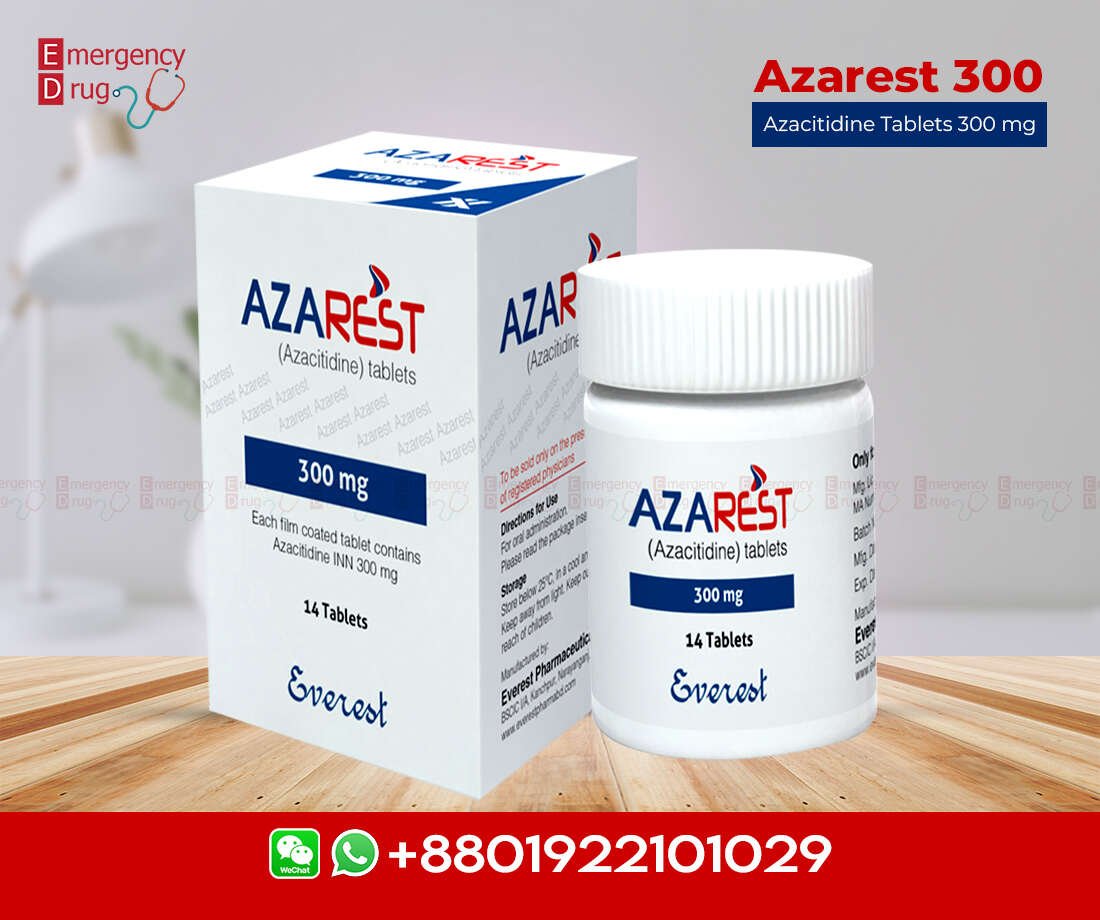Azacitidine
Azacitidine
Showing the single result
Why Azacitidine Is a Game-Changer for AML Survivors?
Azacitidine is used to treat adults with acute myeloid leukemia who have achieved either complete remission (CR) or complete remission with incomplete blood count recovery (CRi) after intense induction chemotherapy but are unable to undergo further intensive curative therapy.
Primary Indication
-
Approved For:
Maintenance therapy in adult AML patients who achieved:
→ Complete Remission (CR) or
→ Complete Remission with Incomplete Hematologic Recovery (CRi)
after intensive induction chemotherapy, AND are ineligible for further intensive curative therapy (e.g., stem cell transplant).
Mechanism of Action
-
Hypomethylating Agent:
Inhibits DNA methyltransferase → reduces abnormal DNA methylation → reactivates tumor-suppressor genes. -
Cytotoxic Effect:
Incorporated into DNA/RNA → disrupts cancer cell replication.
Critical: Continue until disease progression or unacceptable toxicity.
Key Clinical Evidence
-
QUAZAR Trial:
-
Overall Survival (OS): 24.7 months (vs. 14.8 months with placebo).
-
Relapse-Free Survival (RFS): 10.2 months (vs. 4.8 months).
-
Benefit: Most pronounced in patients with intermediate/poor-risk genetics.
-
Common Side Effects (≥20%)
| Side Effect | Management |
|---|---|
| GI Toxicity | Nausea (65%), vomiting (60%), diarrhea (50%) → Use antiemetics; take at bedtime. |
| Cytopenias | Neutropenia (41%), thrombocytopenia (38%) → Monitor blood counts weekly. |
| Fatigue (44%) | Activity pacing; rule out anemia. |
| Infections (e.g., pneumonia) | Prompt fever evaluation; avoid live vaccines. |
Serious Risks
-
Bone Marrow Suppression:
→ Febrile neutropenia (12%); withhold dose if ANC <500/µL or platelets <50K/µL. -
Hepatotoxicity:
→ Monitor LFTs monthly; fatal cases reported. -
Renal Impairment:
→ Avoid in severe renal failure (CrCl <30 mL/min). -
Embryo-Fetal Toxicity:
→ Pregnancy Category D; use effective contraception.
Drug Interactions
-
Avoid Live Vaccines: ↑ Risk of infection (e.g., MMR, varicella).
-
Antacids/PPIs: ↓ Azacitidine absorption → separate doses by ≥2 hours.
-
Strong CYP Inducers (e.g., rifampin): May reduce efficacy.
Patient Counseling Points
-
Take on empty stomach: Critical for absorption.
-
Adherence: Complete all 14 doses/cycle even if side effects occur (unless directed to stop).
-
Report Immediately:
-
Fever >100.4°F (38°C) or signs of infection
-
Uncontrolled nausea/vomiting
-
Unusual bleeding/bruising
-
-
Contraception: Required during and ≥6 months after treatment.
Monitoring Protocol
-
Blood Counts: Weekly for first 2 cycles, then before each cycle.
-
Liver/Kidney Function: Baseline and monthly.
-
Infection Signs: Vigilance for fever, cough, dyspnea.
Conclusion
Azacitidine (oral) significantly extends remission and survival in eligible AML patients post-chemotherapy but requires strict adherence to dosing, proactive side-effect management, and regular monitoring.
Discuss with your oncologist whether your clinical profile (e.g., remission status, organ function, genetic risk) aligns with this therapy.
For full prescribing details: FDA Label for Onureg.

